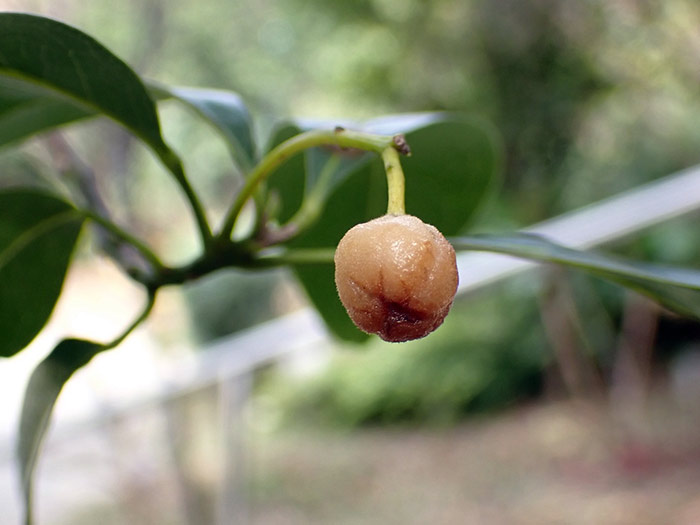Acronychia pedunculata
The Indian aspen is a small tree or shrub native to Taiwan. It is a rare plant classified as vulnerable and has a relatively limited distribution range, mainly confined to coastal forests in northern Taiwan and low-altitude mountain areas in central Taiwan, such as Dakeng and Dadu Mountain in Taichung. It prefers to grow in moist environments with good drainage.
One of the most striking features of the Indian aspen is the citrus-like fragrance that permeates the entire plant, making it easily recognizable even when not in bloom. Its leaves are leathery and vary in shape, ranging from oblong to oblanceolate. The upper surface of the leaves is glossy green, while the underside is lighter in color. The flowering period primarily occurs from May to October, producing small, creamy-white flowers. The fruiting period lasts for several months, with oval or nearly spherical drupes visible from September to March of the following year. When mature, the drupes turn from green to yellow. Although the plant produces a significant number of fruits, the natural germination rate of the seeds is relatively low, which is one of the reasons for the scarcity of wild populations.
In the museum the Indian aspen is currently planted on a gentle slope next to the large lawn in the Botanical Garden, under continued restoration work. In collaboration with the Taichung City Government, the museum has selected 12 native Taiwanese tree species with the aim of transforming Central Park into a park featuring low-altitude plants native to Taiwan. The Indian aspen is one of these species, highlighting its importance in the local ecology and aesthetic value of Taichung.
The Chinese name of this plant is the same as that of a certain spice used in ancient times, and there is much confusion in related application data. Please pay close attention when referring to literature before use to avoid misuse.

